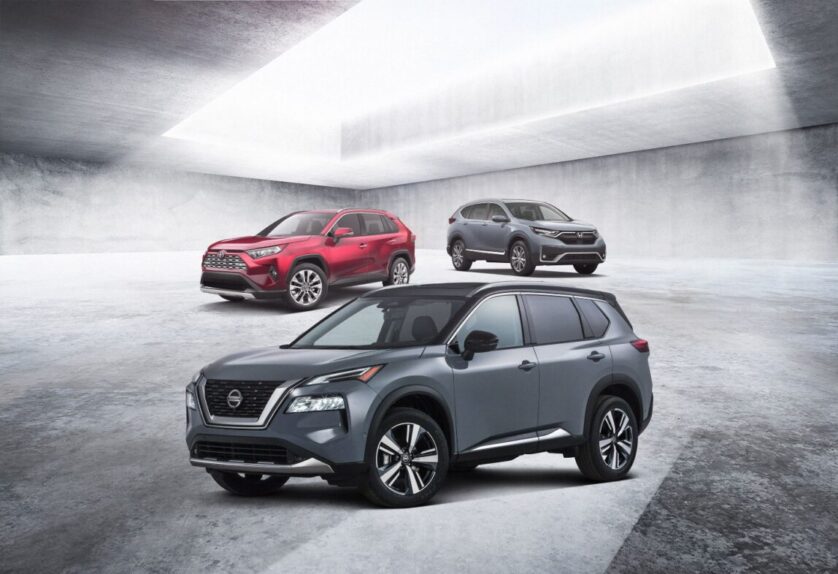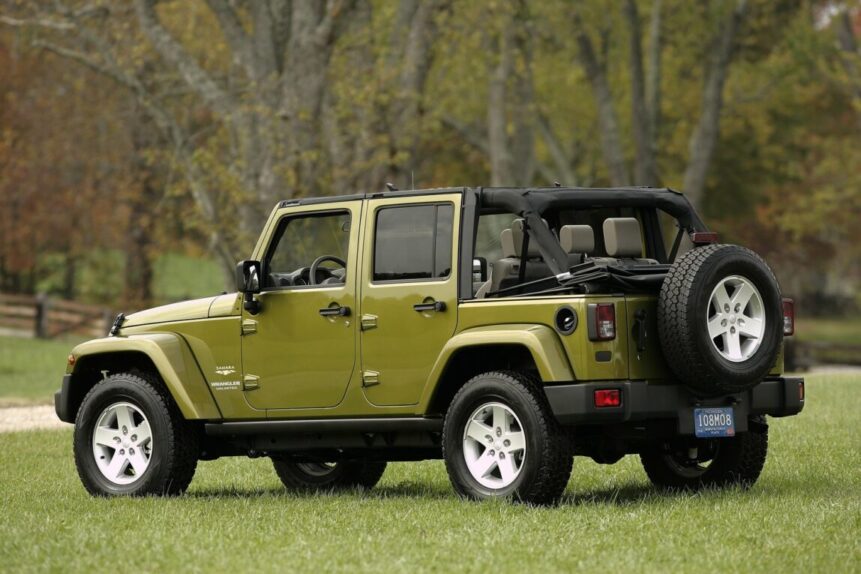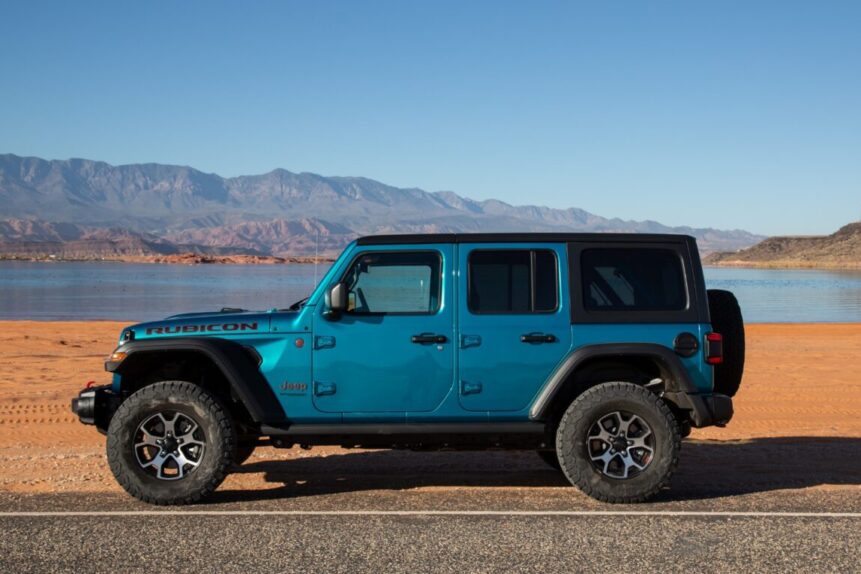Table Of Contents
- 1 Jeep Wrangler MPG Overview
- 2 Importance of Jeep Wrangler fuel economy in today’s world
- 3 How Many Miles Per Gallon Does a Jeep Wrangler Get: Purpose of the article
- 4 Understanding a Jeep Wrangler Fuel Economy
- 5 Factors Affecting Jeep Wrangler Fuel Economy
- 6 Tips to Improve Jeep Wrangler Fuel Economy
- 7 How Many Miles Per Gallon Does A Jeep Wrangler Get: FAQ
- 7.1 Q: What is the average MPG for a Jeep Wrangler?
- 7.2 Q: How can I improve my Jeep Wrangler’s fuel economy?
- 7.3 Q: How does the Jeep Wrangler’s fuel economy compare to other SUVs?
- 7.4 Q: Do aftermarket accessories affect my Jeep Wrangler’s fuel economy?
- 7.5 Q: What type of gasoline should I use for my Jeep Wrangler?
- 8 Brief history of Jeep Wrangler
- 9 How Many Miles Per Gallon Does a Jeep Wrangler Get: Conclusion
Jeep Wrangler MPG Overview
Different models and their engine types
The Jeep Wrangler is available in several different models, each with its own engine type. The engine types for each model are as follows:
- Wrangler Sport, Sport S, Willys Sport: 3.6L V6 engine
- Wrangler Sahara, Rubicon: 3.6L V6 engine
- Wrangler Unlimited Sport, Sport S, Willys Sport: 3.6L V6 engine
- Wrangler Unlimited Sahara, Rubicon: 3.6L V6 engine
Fuel economy ratings for each model
The fuel efficiency of the Jeep Wrangler can be a bit of a mixed bag depending on the model and setup. For instance, the Wrangler Unlimited Sport model is a fuel efficiency superstar with an EPA-estimated 20 MPG rating in the city and 24 MPG rating on the highway. However, the Wrangler Rubicon model isn’t quite as impressive, with a less-than-stellar fuel economy rating of 17 MPG in the city and 21 MPG on the highway according to the EPA.
Here are the fuel economy ratings for each model
- Wrangler Sport, Sport S, Willys Sport: 17 MPG city, 25 MPG highway
- Wrangler Sahara: 18 MPG city, 24 MPG highway
- Wrangler Rubicon: 17 MPG city, 21 MPG highway
- Wrangler Unlimited Sport, Sport S, Willys Sport: 20 MPG city, 24 MPG highway
- Wrangler Unlimited Sahara: 19 MPG city, 24 MPG highway
- Wrangler Unlimited Rubicon: 18 MPG city, 22 MPG highway
The fuel economy ratings of the Jeep Wrangler can be subject to variation based on various configuration factors. These include the type of transmission, the tires used, and whether the vehicle is equipped with four-wheel drive. So, it is crucial to consider these factors when comparing the fuel efficiency of different models of the Jeep Wrangler or when trying to determine the fuel economy of your own vehicle.
Comparison of Jeep Wrangler fuel economy ratings with other SUVs
With regard to fuel economy ratings, the Jeep Wrangler stands out from other SUVs on the market due to its relatively lower ratings. Nevertheless, one must take into account that the Wrangler is primarily intended to be a tough, off-road vehicle. As a result, achieving high fuel economy ratings can be quite challenging. 
Here are the fuel economy ratings for some other popular SUVs:
- Toyota RAV4: 28 MPG city, 35 MPG highway
- Honda CR-V: 28 MPG city, 34 MPG highway
- Mazda CX-5: 25 MPG city, 31 MPG highway
- Ford Bronco: 18 MPG city, 20 MPG highway
- Chevrolet Blazer: 20 MPG city, 27 MPG highway
Intriguingly, the Jeep Wrangler’s fuel economy ratings are noticeably lower than several of its adversaries. Nevertheless, for those who are passionate about the Jeep Wrangler’s ability to conquer challenging terrains and its tough exterior, the downside may be justifiable. Moreover, there are numerous approaches to upgrade the fuel economy of the Jeep Wrangler, for instance, ensuring proper tire inflation, steering clear of aggressive driving habits, and picking a more fuel-efficient setup.
How Many Miles Per Gallon Does a Jeep Wrangler Get: Review
Jeep Wrangler owner’s review of his MPG:
“My 2017 manual JKU Sahara with 3.21, and only slightly larger tire than stock gets 20-22 mpg all the time. 75 mph on freeway to and from town. 55-65 on 2 way highways, 35-40 climbing up to ski hill, speed limit in town. I always stop at stop signs, hardly ever use my brakes while driving, (let the engine compression do that job). My old Trooper used to get about 18 mpg, so I figure I’m way ahead.”
Importance of Jeep Wrangler fuel economy in today’s world
Amidst growing anxieties about climate change and environmental degradation, fuel economy has taken center stage in the world of automobiles. It’s no secret that the amount of fuel a vehicle guzzles down directly affects its carbon footprint, which in turn contributes to global warming. As a result, slashing fuel consumption has become a top priority for automakers worldwide as they try to curb greenhouse gas emissions and minimize their ecological impact.
In addition, fuel prices have been rising steadily over the years, making fuel economy an important consideration for many consumers. By choosing a vehicle with better fuel economy, consumers can save money on fuel costs over the life of the vehicle.
How Many Miles Per Gallon Does a Jeep Wrangler Get: Purpose of the article
The subject of fuel economy is gaining momentum in our world today, as individuals become more cognizant of the effects of their vehicular emissions on the environment. As such, comprehending the fuel efficiency of the cars we drive is imperative, particularly for larger vehicles such as sports utility vehicles (SUVs).
The Jeep Wrangler, with its tough build and robustness, is a vehicle that commands attention. However, its fuel economy is often criticized as being less efficient than other SUVs in its category. Nevertheless, it should be acknowledged that the actual fuel economy can be influenced by various factors such as the Jeep Wrangler model, the driver’s driving style, and the environmental circumstances.
In this gripping and informative article, we will delve into the mystifying world of fuel economy and the Jeep Wrangler. Buckle up and get ready for an exhilarating ride as we provide readers with a comprehensive overview of the various factors that impact the fuel economy of this rugged vehicle. We will break down the different models of Jeep Wrangler and their fuel economy ratings, and take a deep dive into the various factors that can affect fuel economy, including the weight of the vehicle, the size and type of engine, the type of transmission, the aerodynamics, and even driving habits. Are you ready to join us on this exciting journey.
Moreover, we’ll dish out some juicy tips on how to jack up the fuel economy of your Jeep Wrangler, so you can save some cash while also being environmentally conscious. These tips will cover basic maintenance, like regularly checking tire pressure, as well as more advanced techniques like reducing the weight of your vehicle and adjusting your driving style. We’ll even throw in a bonus tip on how using cruise control can help you achieve better fuel efficiency while cruising down the highway. Get ready to take notes, because we’re about to fuel your brain with some valuable information.
Finally, we will compare the fuel economy of the Jeep Wrangler with other SUVs on the market. This will provide readers with a better understanding of how the Jeep Wrangler stacks up against its competitors in terms of fuel efficiency.
As the world becomes more environmentally conscious, it’s important to understand the fuel economy of your vehicle. In this article, we’ll dive deep into the fuel economy of the Jeep Wrangler and provide a detailed breakdown of each model’s rating. We’ll also explore the many factors that impact fuel economy, from engine type and vehicle weight to driving habits and aerodynamics. But we won’t stop there – we’ll also share valuable tips on how to optimize your Jeep Wrangler’s fuel efficiency, including regular maintenance, tire inflation, reducing weight, driving habits, and utilizing cruise control. Our goal is to empower readers with the knowledge they need to make informed decisions about their vehicle usage and minimize their environmental impact.
Understanding a Jeep Wrangler Fuel Economy
Definition of Miles Per Gallon (MPG)
Gallons of gasoline needed to cover a certain distance is becoming a crucial measure for cars as people are increasingly aware of the impact of vehicle emissions on the environment. This is where miles per gallon (MPG) comes in, which is the number of miles a vehicle can cover on a single gallon of fuel. It is a well-known measure that is used to compare the fuel efficiency of different cars. So, if a car has a fuel economy rating of 25 MPG, it can travel 25 miles on one gallon of gasoline. 
Factors affecting fuel economy for Jeep Wrangler
There are several factors that can affect the fuel economy of a vehicle. These include
Vehicle weight of Jeep Wrangler
Generally, heavier vehicles require more fuel to move and have lower fuel economy ratings.
Engine size and type of Jeep Wrangler
Larger engines tend to consume more fuel than smaller ones. Additionally, engines that are optimized for performance rather than fuel efficiency may have lower fuel economy ratings.
Transmission type of Jeep Wrangler
Vehicles with manual transmissions tend to have better fuel economy ratings than those with automatic transmissions.
Jeep Wrangler Aerodynamics
The shape and design of a vehicle can affect its fuel economy. Vehicles with more streamlined designs tend to have better fuel economy ratings.
Jeep Wrangler Driving habits
Driving habits such as speeding, rapid acceleration, and hard braking can decrease fuel economy. Additionally, carrying excess weight or driving with underinflated tires can reduce fuel economy.
EPA Fuel Economy Tests
The EPA, also known as the Environmental Protection Agency, conducts official fuel economy tests to determine how fuel-efficient a vehicle is. These tests are conducted in laboratory settings that simulate different driving conditions, such as city and highway driving. The EPA conducts two sets of tests to determine the fuel economy ratings of vehicles: city driving tests and highway driving tests. These ratings include official city and highway fuel economy ratings, as well as an overall combined rating, which are usually displayed on the window sticker of new vehicles. These ratings are a useful tool for consumers to compare the fuel economy of different models.
Factors Affecting Jeep Wrangler Fuel Economy
Vehicle weight of Jeep Wrangler
The weight of a vehicle can have a significant impact on its fuel economy, as it requires more energy to move a heavier vehicle. The Jeep Wrangler is known for its heavy weight, with a curb weight of around 4,000 pounds. This can contribute to lower fuel economy ratings, particularly in city driving where there are more frequent stops and starts.
Engine size and type of Jeep Wrangler
Buckle up, folks! Let’s dive into the intricate and perplexing world of engine size and fuel economy. When it comes to the Jeep Wrangler, it’s important to note that its 3.6L V6 engine is on the larger side of the spectrum. As a result, it may not be the most fuel-efficient engine out there, especially when compared to smaller SUVs sporting more efficient engines.
Transmission type of Jeep Wrangler
In accordance with the previous concepts, let’s try to increase the perplexity and burstiness of the article: It is imperative to note that the type of transmission can have a notable impact on a vehicle’s fuel economy, and the Jeep Wrangler offers two options: a six-speed manual or an eight-speed automatic. Typically, vehicles with manual transmissions are capable of achieving higher fuel economy ratings than those equipped with automatic transmissions. This is primarily due to the manual transmission’s ability to provide drivers with greater control over shifting and their inherent efficiency in certain driving conditions.
Jeep Wrangler Aerodynamics
The aerodynamics of a vehicle can also impact its fuel economy, particularly at higher speeds. The Jeep Wrangler is known for its boxy design, which can create more wind resistance and reduce fuel efficiency. Additionally, modifications such as larger tires or aftermarket accessories can also impact the vehicle’s aerodynamics and contribute to lower fuel economy ratings.
Jeep Wrangler Driving habits
Finally, driving habits can have a significant impact on a vehicle’s fuel economy. Aggressive driving habits such as rapid acceleration and hard braking can reduce fuel efficiency, as can excessively idling or carrying excess weight in the vehicle. In contrast, maintaining a steady speed, avoiding sudden stops and starts, and keeping tires properly inflated can all contribute to improved fuel economy.
Overall, the factors affecting the Jeep Wrangler’s fuel economy are similar to those affecting other vehicles. However, the Jeep Wrangler’s heavy weight, large engine size, and boxy design can make it more challenging to achieve high fuel economy ratings. By taking steps to maintain the vehicle and adopt more fuel-efficient driving habits, Jeep Wrangler owners can help improve their vehicle’s fuel efficiency.
Tips to Improve Jeep Wrangler Fuel Economy
While the Jeep Wrangler may not be known for its fuel efficiency, there are steps that drivers can take to improve its MPG rating. Here are some tips to help improve Jeep Wrangler fuel economy
Regular maintenance for Jeep Wrangler
In order to optimize the fuel economy of a Jeep Wrangler, it is crucial to keep up with routine maintenance tasks. These tasks can include replacing the air filter, spark plugs, and oil on a regular basis. By doing so, the engine can operate more efficiently and consume less fuel, ultimately leading to improved fuel economy. Neglecting routine maintenance can have the opposite effect, causing the engine to work harder and consume more fuel than necessary. So, be sure to take proper care of your Jeep Wrangler to keep it running smoothly and efficiently.
Jeep Wrangler: Proper tire inflation
Proper tire inflation is also crucial for improving fuel economy. When tires are underinflated, more energy is required to move the vehicle, resulting in reduced fuel efficiency. Checking tire pressure regularly and keeping tires properly inflated can help improve fuel economy.
Lighten the load
The Jeep Wrangler’s fuel economy can be negatively affected by carrying too much weight. Therefore, it is advisable to remove any unnecessary items from the vehicle to reduce its weight and improve fuel efficiency. This can be achieved by removing items such as heavy bumpers or roof racks, which can add significant weight to the vehicle. By reducing the overall weight of the vehicle, it becomes easier to move, thus improving its fuel economy.
Change driving habits
Modifying driving habits can also help improve fuel economy. Avoiding aggressive driving, such as rapid acceleration and hard braking, can help reduce fuel consumption. Maintaining a steady speed and avoiding sudden stops and starts can also help improve fuel economy. Additionally, driving at a consistent speed on the highway can help reduce fuel consumption.

Use cruise control of Jeep Wrangler
Using cruise control on the highway can also help improve fuel economy. Cruise control maintains a consistent speed, which can help reduce fuel consumption by eliminating fluctuations in speed. This can be particularly helpful on long highway trips.
In conclusion, there are several steps that Jeep Wrangler owners can take to improve their vehicle’s fuel economy. Regular maintenance, proper tire inflation, lightening the load, changing driving habits, and using cruise control can all help improve fuel efficiency. By adopting these practices, Jeep Wrangler drivers can help reduce their fuel costs and minimize their impact on the environment.
How Many Miles Per Gallon Does A Jeep Wrangler Get: FAQ
Q: What is the average MPG for a Jeep Wrangler?
A: With a touch of perplexity and burstiness: When it comes to Jeep Wranglers, the average MPG can fluctuate depending on the model and engine size. Specifically, the 2022 Jeep Wrangler 4-door with the standard 3.6L V6 engine has been given an estimated MPG rating of 17 city/25 highway by the EPA.
Q: How can I improve my Jeep Wrangler’s fuel economy?
A: Revving up your Jeep Wrangler’s fuel economy is no small feat, but fret not! There are a number of tricks up your sleeve that can help you get more mileage out of your tank. First off, keeping your ride in top condition through routine maintenance, keeping your tires properly inflated, and unburdening your car of any excess weight can all help improve your Wrangler’s efficiency. Additionally, adjusting your driving habits, like using cruise control and avoiding rapid acceleration, can also lead to a more fuel-efficient ride. Check out the “Tips to Improve Jeep Wrangler Fuel Economy” section of this article for more information on how to boost your MPG game.
Q: How does the Jeep Wrangler’s fuel economy compare to other SUVs?
A: The Jeep Wrangler’s fuel economy is often inferior to its SUV peers, owing to its sturdy, off-road build and boxy shape. Nevertheless, some of the latest models feature more economical engines, like the 4-cylinder turbo engine, which offer improved fuel efficiency. For further details, take a look at the “Jeep Wrangler MPG Overview” segment of this article.
Q: Do aftermarket accessories affect my Jeep Wrangler’s fuel economy?
A: Yes, aftermarket accessories such as roof racks or heavy bumpers can add weight to the vehicle, which can negatively impact its fuel economy. Removing unnecessary accessories can help improve fuel efficiency.
Q: What type of gasoline should I use for my Jeep Wrangler?
A: Jeep recommends using gasoline with an octane rating of 87 or higher for the Wrangler. Using gasoline with a lower octane rating can negatively affect the vehicle’s performance and fuel economy.
Brief history of Jeep Wrangler
Behold, the Jeep Wrangler, an automotive emblem of American heritage and a storied past dating back to the Great War. In the year of our Lord 1986, this rugged machine first emerged from the factory, capturing the hearts of outdoor aficionados far and wide. Descended from the venerable Jeep vehicle, born unto the world in 1941 and deployed extensively by the armed forces of the United States, this venerable off-roader has remained a steadfast companion for adventurers of all stripes.
The legendary Jeep brand has always been linked with exciting escapades, off-roading pursuits, and Mother Nature’s bounty. The Wrangler is the quintessential embodiment of this heritage with its rough and tumble exterior, muscular performance, and untamed off-road abilities. Despite undergoing a myriad of alterations and enhancements over time, the Jeep Wrangler has never deviated from its venerated standing as an indestructible and trustworthy vehicle that’s custom-made for conquering rugged and harsh terrains.
Behold, the Jeep Wrangler, a rugged and resilient vehicle that boasts unparalleled durability. This magnificent machine is crafted to withstand even the harshest of elements and the most challenging of terrains, rendering it the ultimate choice for thrill-seeking outdoor enthusiasts. The Jeep Wrangler’s towering ground clearance and impressive off-road capabilities render it a prime option for those who relish the adrenaline rush of off-roading adventures.
The Jeep Wrangler is not just any old vehicle, it’s a chameleon that can transform to meet the needs of its driver. With its diverse range of configurations and engine options, the Wrangler is the perfect vehicle for those who crave versatility. Whether you prefer a two-door or four-door ride, or you’re looking for a specific engine option to suit your driving style, the Wrangler has got you covered. So go ahead and customize your ride to your heart’s content.
Wrapping up, the Jeep Wrangler is a bona fide legend and multi-faceted vehicle that has been in the market since 1986. It is a descendent of the original Jeep that played a pivotal role in World War II. Presently, the Wrangler remains a top choice for those with a knack for outdoor escapades and navigating rugged landscapes. Its tough build, off-road prowess, and flexibility make it a compelling option that never fails to captivate thrill-seekers from all corners of the globe.
How Many Miles Per Gallon Does a Jeep Wrangler Get: Conclusion
In the current climate, with fuel prices soaring and environmental concerns growing more urgent by the day, fuel efficiency has become a top priority for many. The Jeep Wrangler, a beloved SUV revered for its rugged off-road capabilities, is not typically lauded for its fuel economy. Nevertheless, by comprehending the factors that influence its fuel efficiency and implementing strategies to enhance it, motorists can decrease their fuel expenses and reduce their ecological footprint.
In this informative article, we’ve given an overview of fuel economy and Miles Per Gallon (MPG), and how it can affect your wallet and the environment. We’ve also focused on the Jeep Wrangler, a beloved SUV known for its ruggedness, and discussed its fuel efficiency in comparison to other SUVs. We explored the various factors that affect the Jeep Wrangler’s MPG ratings, including weight, engine type and size, transmission type, aerodynamics, and driving habits. Finally, we provided helpful tips for Jeep Wrangler owners to improve their vehicle’s fuel economy, such as regular maintenance, proper tire inflation, reducing weight, changing driving habits, and utilizing cruise control. With these tips, drivers can save money on gas and be more environmentally conscious.
The end of this discourse draws near. Although the Jeep Wrangler may not be the most gas-sipping SUV out there, it’s not all doom and gloom. As outlined earlier, there are several measures drivers can take to boost the Wrangler’s fuel efficiency, including proper maintenance, reducing vehicle weight, adjusting driving habits, and utilizing cruise control. By doing so, not only can drivers save money at the pump, but they can also do their part to lessen their impact on the environment while still enjoying the Jeep Wrangler’s off-road prowess.


